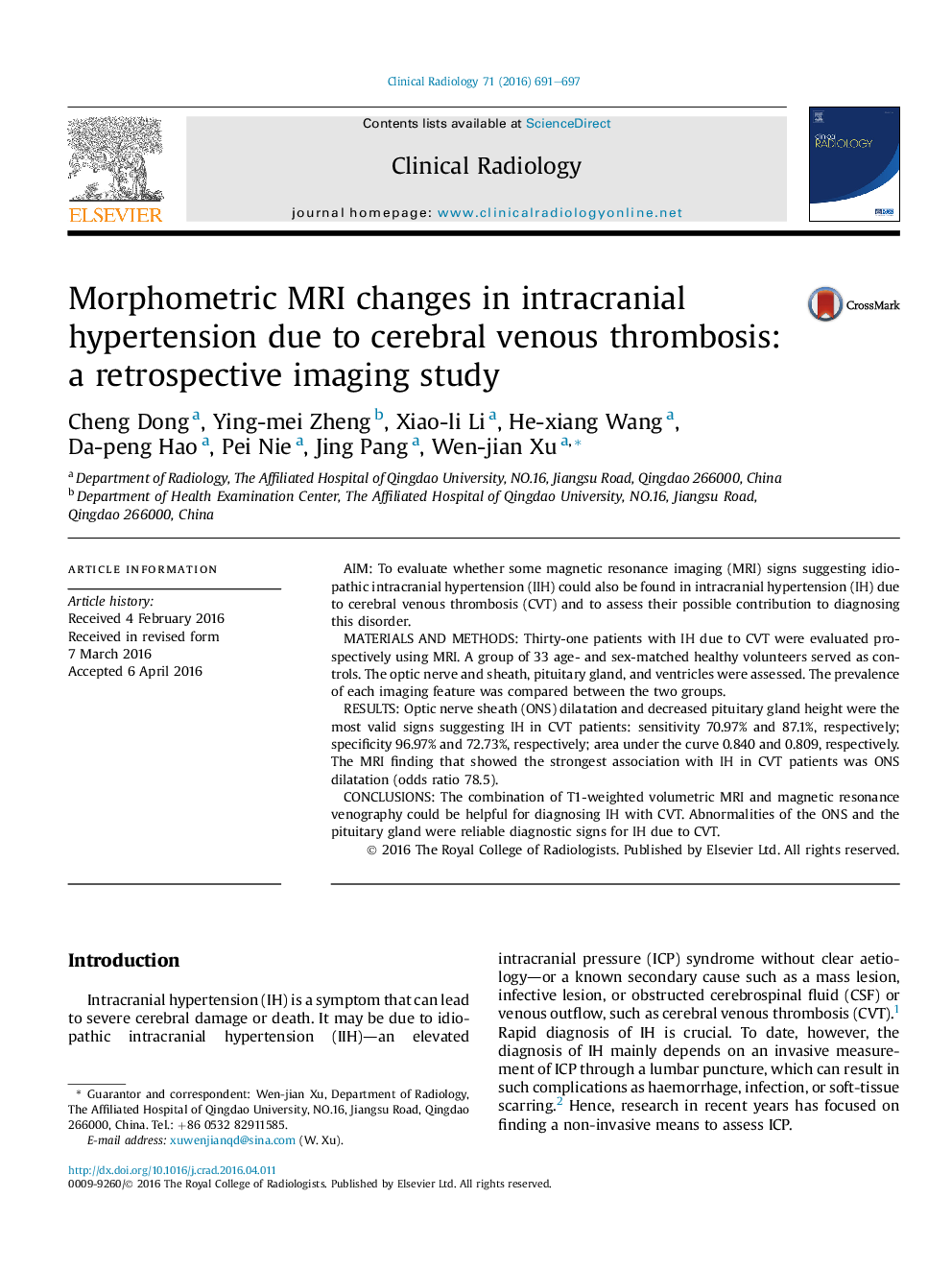| Article ID | Journal | Published Year | Pages | File Type |
|---|---|---|---|---|
| 3981178 | Clinical Radiology | 2016 | 7 Pages |
•We compared the prevalence of MRI imaging features between IH patients due to CVT and healthy volunteers.•Several MRI imaging features occur more frequently in IH patients due to CVT.•Abnormalities of the ONS and the pituitary gland were reliable diagnostic signs for IH due to CVT.
AimTo evaluate whether some magnetic resonance imaging (MRI) signs suggesting idiopathic intracranial hypertension (IIH) could also be found in intracranial hypertension (IH) due to cerebral venous thrombosis (CVT) and to assess their possible contribution to diagnosing this disorder.Materials and methodsThirty-one patients with IH due to CVT were evaluated prospectively using MRI. A group of 33 age- and sex-matched healthy volunteers served as controls. The optic nerve and sheath, pituitary gland, and ventricles were assessed. The prevalence of each imaging feature was compared between the two groups.ResultsOptic nerve sheath (ONS) dilatation and decreased pituitary gland height were the most valid signs suggesting IH in CVT patients: sensitivity 70.97% and 87.1%, respectively; specificity 96.97% and 72.73%, respectively; area under the curve 0.840 and 0.809, respectively. The MRI finding that showed the strongest association with IH in CVT patients was ONS dilatation (odds ratio 78.5).ConclusionsThe combination of T1-weighted volumetric MRI and magnetic resonance venography could be helpful for diagnosing IH with CVT. Abnormalities of the ONS and the pituitary gland were reliable diagnostic signs for IH due to CVT.
